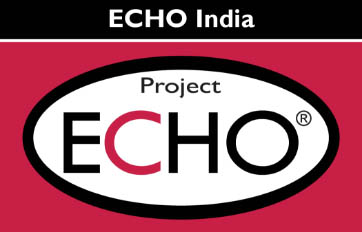Immunization plays a vital role in protecting people of all ages from serious and often life-threatening diseases. Globally, over the past 50 years, vaccines have saved 154 million lives, that’s more than 3 million lives a year, or six people every minute for five decades. Vaccination has also reduced infant deaths by 40%, and today, people of all ages can receive vaccines against serious diseases such as malaria, human papillomavirus (HPV), cholera, dengue, meningitis, and more [1].
Despite the large-scale success of immunization programs, many people across the world still miss out on essential vaccines and remain vulnerable to preventable diseases. For instance, in 2023 alone, 14.5 million children missed out on any vaccination — referred to as zero-dose children (those who did not receive even a single dose of any vaccine) [2]. This highlights that significant progress is still needed to protect all through vaccination.
India's Immunization Landscape: Progress and Challenges
India, too, has a long history with immunization. Running the Universal Immunisation Programme (UIP) — one of the largest immunization programs in the world — the Government of India provides vaccination against 11 vaccine-preventable diseases such as diphtheria, pertussis, tetanus, polio, measles, and others [3]. The programme targets approximately 2.67 crore (26.7 million) newborns and 2.9 crore (29 million) pregnant women annually [4]. As of FY 2023–24, the national full immunization coverage stands at an impressive 93.5% [5].
However, despite such progress, challenges still persist. Due to regional disparities, rural and remote areas often fail to fully benefit from immunization programs. Access to healthcare, poor transportation, and socio-economic barriers make it difficult for rural families to reach vaccination services. Misinformation and lack of awareness further contribute to vaccine hesitancy among parents [6]. Although the number of zero-dose children has steadily declined, they still account for 0.11% of India's total population [7].
Additionally, inadequate training of healthcare workers in vaccine distribution and storage, along with logistical hurdles, can lead to uneven access to immunization benefits [8]. Reaching the most remote, underserved, and hesitant communities remains an ongoing mission.
Road Ahead: Ensuring Immunization Efforts Stay Strong and Reach More People
Sustaining and expanding immunization efforts requires constant and renewed commitment to adopting a more holistic approach, one that is tailored to the specific needs and health vulnerabilities of each community. It is equally important to continue advancing immunization technologies while ensuring that these advancements are not limited to urban centers but also reach remote and underserved regions. The goal is not just to maintain the gains made so far but to build on them and reach 100% immunization.
ECHO India's Contribution: Strengthening Immunization through Capacity Building
In order to strengthen ongoing immunization efforts and reach 100% immunization, ECHO India channels its efforts into facilitating the empowerment of frontline healthcare workers through targeted mentorship and use of technology. These healthcare providers play a vital role in ensuring vaccines reach the people who need them most and in addressing vaccine hesitancy.
One of the significant initiatives by ECHO India was the launch of the COVID-19 Vaccination Confidence & Advocacy Project (VCAP). This project addressed issues of confidence and hesitancy related to COVID-19 vaccines by building the capacities of frontline healthcare worker (HCW) cadres in remote and underserved areas. Over the course of one year, the program strengthened healthcare workers and medical professionals through ECHO’s mentoring model. It helped healthcare workers build their skills to reduce vaccine hesitancy within communities, while also boosting their confidence in communicating the benefits of COVID-19 vaccination. Additionally, it enhanced their ability to assess the severity of vaccine-related adverse effects and provide appropriate guidance. With 24 batches and 138 sessions, over 8,700 HCWs across 11 states were mentored.
Another significant way ECHO India is contributing to immunization efforts is through its initiatives around HPV vaccination. Cervical cancer is the second most common cancer affecting women in India, with thousands of women suffering from it each year. The tragic reality is that cervical cancer is highly preventable through the HPV vaccine, which can significantly reduce the number of cases. However, a major barrier remains a lack of awareness about the vaccine. By training healthcare workers to become effective communicators and community advocates, ECHO India highlights the importance of training healthcare workers not only to administer vaccines but also to adopt a community-centric approach, ensuring that people understand the benefits of vaccination and that vaccine hesitancy is effectively addressed.
As we observe World Immunization Week, with the theme "Immunization for All is Humanly Possible," ECHO India is contributing to this vision forward by focusing on capacity building and leveraging technology to empower healthcare workers and communities, ensuring timely immunization and access to life-saving vaccines even in the most remote corners of the country. World Immunization Week serves as a crucial reminder that the fight against preventable diseases is ongoing — and that building a healthier world depends on advancing and strengthening our immunization efforts to ensure that every individual is protected through vaccination.
References
[1] https://www.who.int/news-room/events/detail/2025/04/24/default-calendar/world-immunization-week-2025---immunization-for-all-is-humanly-possible
[2] https://www.who.int/news-room/fact-sheets/detail/immunization-coverage
[3] https://mohfw.gov.in/sites/default/files/41016395871489662752.pdf
[4] https://pib.gov.in/PressReleasePage.aspx?PRID=2071949
[5] https://pib.gov.in/PressReleasePage.aspx?PRID=2042058
[6] https://www.cry.org/blog/child-immunization-in-rural-areas/
[7] https://pib.gov.in/PressReleaseIframePage.aspx?PRID=2034080
[8]https://www.cry.org/blog/child-immunization-in-rural-areas/
